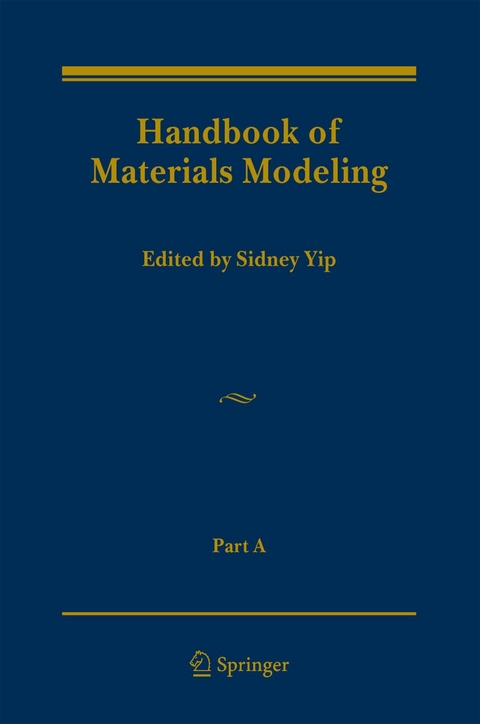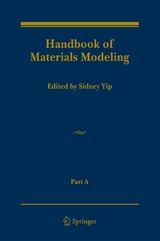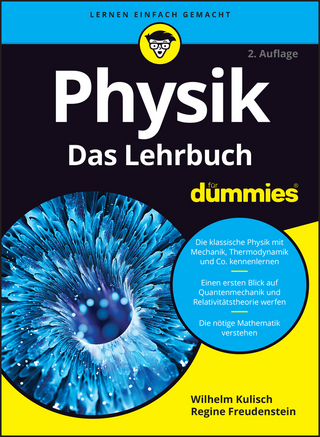Handbook of Materials Modeling
Springer-Verlag New York Inc.
978-1-4020-3287-5 (ISBN)
- Titel erscheint in neuer Auflage
- Artikel merken
The first reference of its kind in the rapidly emerging field of computational approachs to materials research, this is a compendium of perspective-providing and topical articles written to inform students and non-specialists of the current status and capabilities of modelling and simulation. From the standpoint of methodology, the development follows a multiscale approach with emphasis on electronic-structure, atomistic, and mesoscale methods, as well as mathematical analysis and rate processes. Basic models are treated across traditional disciplines, not only in the discussion of methods but also in chapters on crystal defects, microstructure, fluids, polymers and soft matter. Written by authors who are actively participating in the current development, this collection of 150 articles has the breadth and depth to be a major contributor toward defining the field of computational materials. In addition, there are 40 commentaries by highly respected researchers, presenting various views that should interest the future generations of the community.
Subject Editors: Martin Bazant, MIT; Bruce Boghosian, Tufts University; Richard Catlow, Royal Institution; Long-Qing Chen, Pennsylvania State University; William Curtin, Brown University; Tomas Diaz de la Rubia, Lawrence Livermore National Laboratory; Nicolas Hadjiconstantinou, MIT; Mark F. Horstemeyer, Mississippi State University; Efthimios Kaxiras, Harvard University; L. Mahadevan, Harvard University; Dimitrios Maroudas, University of Massachusetts; Nicola Marzari, MIT; Horia Metiu, University of California Santa Barbara; Gregory C. Rutledge, MIT; David J. Srolovitz, Princeton University; Bernhardt L. Trout, MIT; Dieter Wolf, Argonne National Laboratory.
Handbook of Materials Modeling Volume I Methods and Models Editor Sidney Yip, Massachusetts Institute of Technology Subject Editors Martin Bazant, Massachusetts Institute of Technology Bruce Boghosian, Tufts University Richard Catlow, Royal Institution, UK Long-Qing Chen, Pennsylvania State University William Curtin, Brown University Tomas Diaz de la Rubia, Lawrence Livermore National Laboratory Nicolas Hadjiconstantinou, Massachusetts Institute of Technology Mark F. Horstemeyer, Mississippi State University Efthimios Kaxiras, Harvard University L. Mahadevan, Harvard University Dimitrios Maroudas, University of Massachusetts Nicola Marzari, Massachusetts Institute of Technology Horia Metiu, University of California Santa Barbara Gregory C. Rutledge, Massachusetts Institute of Technology David J. Srolovitz, Princeton University Bernhardt L. Trout, Massachusetts Institute of Technology Dieter Wolf, Argonne National Laboratory Sidney Yip, Massachusetts Institute of Technology Springer Science and Business Media to be published in 2005 Handbook of Materials Modeling Volume 1 Methods and Models (Part A Methods) Preface List of Subject Editors List of Contributors Introduction Chap 1. Electronic Scale Chap 2. Atomistic Scale Chap 3. Mesoscale/Continuum Methods Chap 4. Mathematical Methods (Part B Models) Preface List of Subject Editors List of Contributors Chap 5. Rate Processes Chap 6. Crystal Defects Chap 7. Microstructure Chap 8. Fluids Chap 9. Polymers and Soft Matter Plenary Perspectives Handbook of Materials Modeling Vol. 1 Methods and Models Table of Contents Chap 1. Electronic Scale 1.1 Introduction (Nicola Marzari, Efthimios Kaxiras, Bernhardt L. Trout) 1.2 Concepts for Modeling Electrons in Solids: A Perspective (Marvin L. Cohen) 1.3 Achieving Predictive Simulations with Quantum Mechanical Forces: Problems, Prospects, and the Transfer Hamiltonian (Rodney J. Bartlett, Decarlos E. Taylor and Anatoli Korkin) 1.4 First-Principles Molecular Dynamics (Roberto Car, Filippo de Angelis, Paolo Giannozzi, Nicola Marzari) 1.5 Electronic Structure Calculations with Localized Orbitals. The Siesta Method (Emilio Artacho, Julian D. Gale, Alberto Garcia, Javier Junquera, Richard M. Martin, Pablo Ordejón, Daniel Sánchez Portal, José M. Soler) 1.6 Electronic Structure Methods: Augmented Waves, Pseudopotentials (Peter E. Blöchl, Johannes Kästner, Clemens J. Först) 1.7 Real-Space Methods for ab initio Calculations (James R. Chelikowsky) 1.8 An Introduction to Orbital-Free Density Functional Theory (Vincent Lignères and Emily A. Carter) 1.9 Ab initio Thermodynamics and Statistical Mechanics of Surface Properties and Functions (Karsten Reuter, Catherine Stampfl, and Matthias Scheffler) 1.10 Density-Functional Linear Response Theory (Paolo Giannozzi, Stefano Baroni) 1.11 Quasiparticle and Optical Properties of Solids and Nanostructures: the GW/BSE approach (Steven G. Louie and Angelo Rubio) 1.12 Hybrid Quantum Mechanics/Molecular Mechanics Methods and Their Applications (Marek Sierka and Joachim Sauer) 1.13 Ab initio Molecular Dynamics
| Zusatzinfo | 846 Illustrations, black and white; XXXIX, 2965 p. 846 illus. In 2 volumes, not available separately. |
|---|---|
| Verlagsort | New York, NY |
| Sprache | englisch |
| Maße | 160 x 240 mm |
| Themenwelt | Naturwissenschaften ► Physik / Astronomie ► Allgemeines / Lexika |
| Technik ► Maschinenbau | |
| ISBN-10 | 1-4020-3287-0 / 1402032870 |
| ISBN-13 | 978-1-4020-3287-5 / 9781402032875 |
| Zustand | Neuware |
| Haben Sie eine Frage zum Produkt? |
aus dem Bereich





